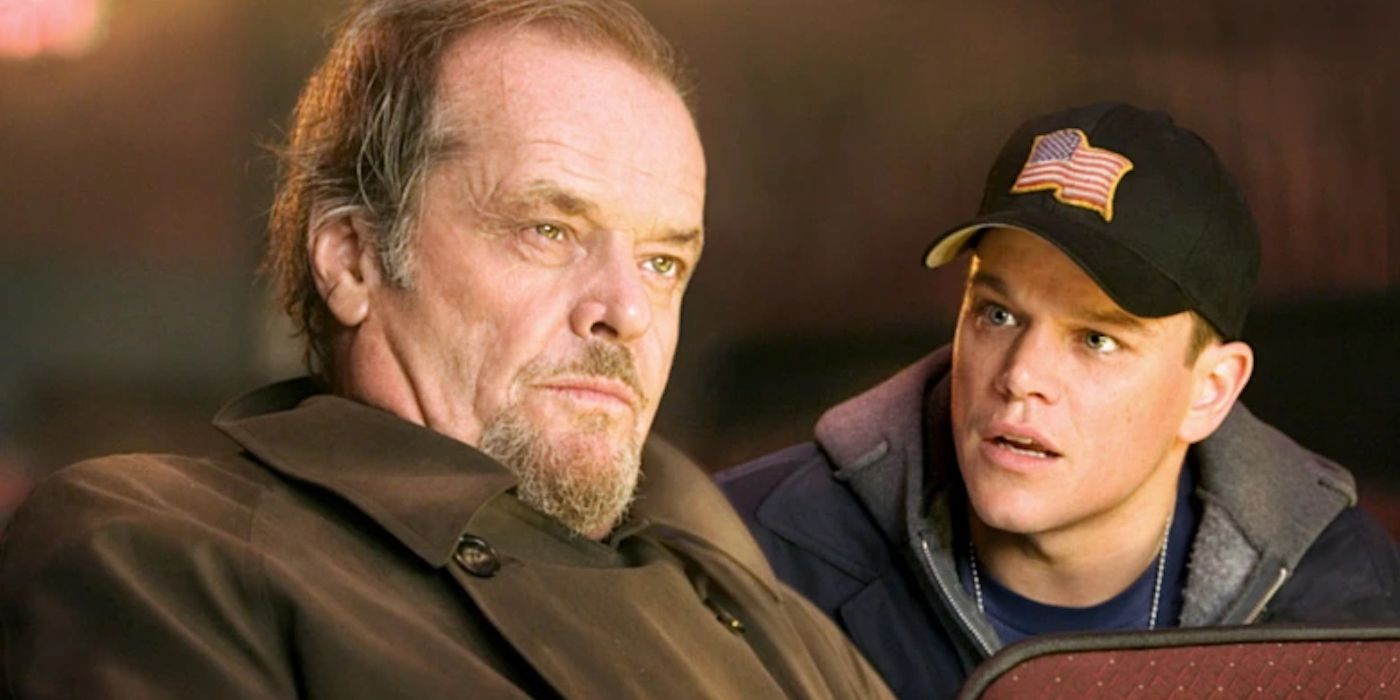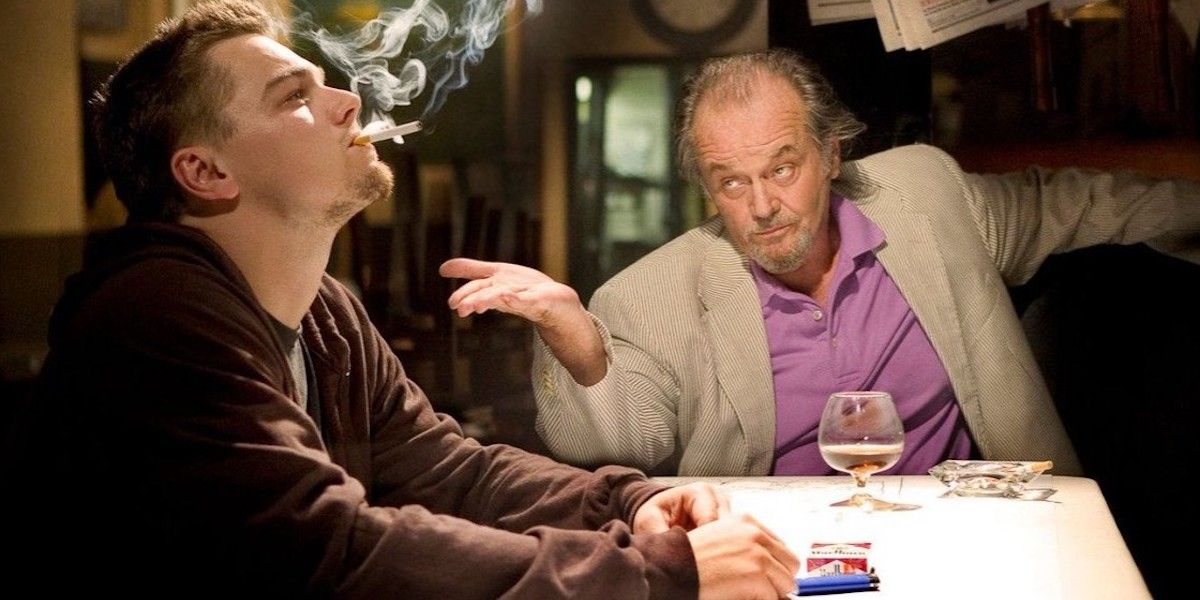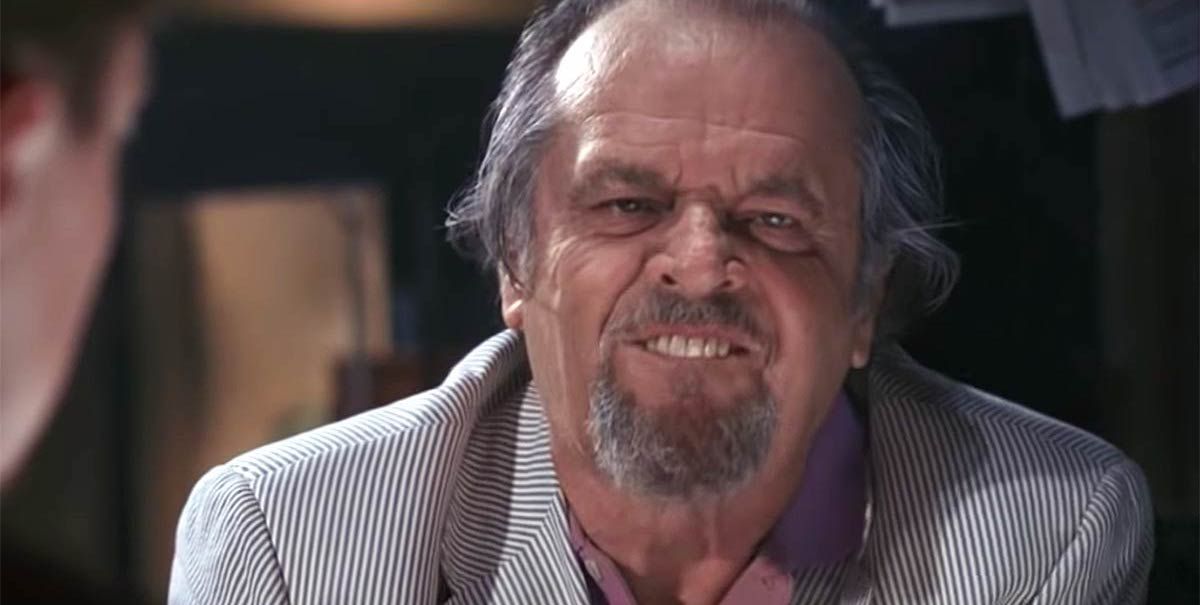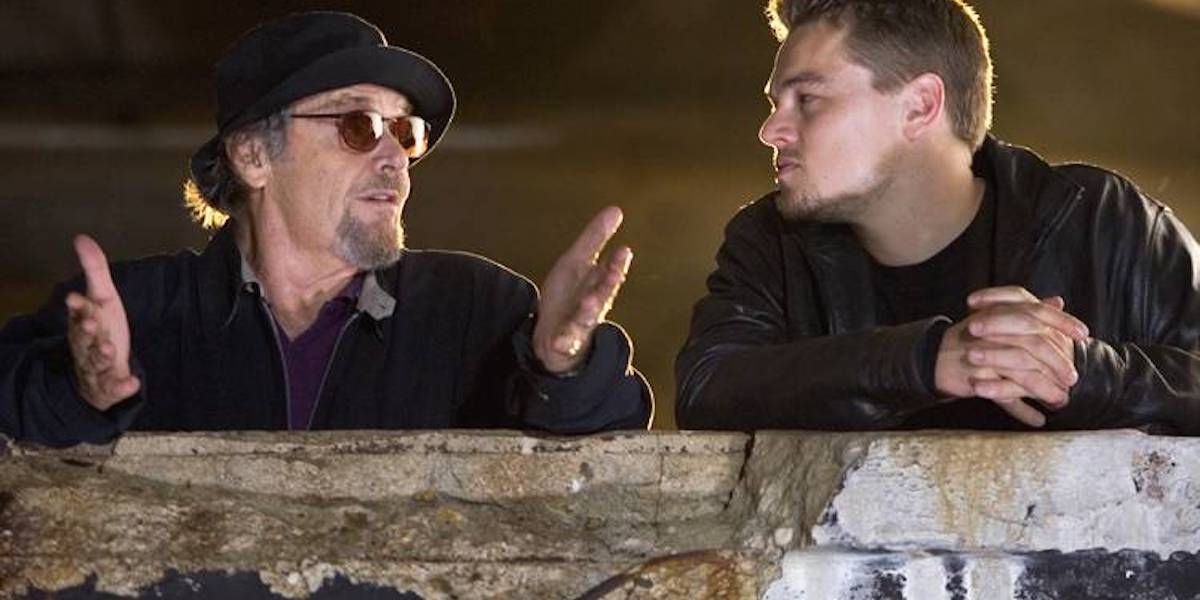The Departed, directed by the legendary Martin Scorsese erupted in 2007 with a storm. If you were allowed to watch wildly violent R-rated movies at the time, it's easy to remember: old footage of Boston erupting in civil unrest as Jack Nicholson's velvety voice begins his opening monologue via voiceover by first saying, "I don't want to be a product of my environment. I want my environment to be a product of me" and ending with "No one gives it to ya. You have to take it." Nicholson's silhouette as the brutal Frank Costello walks through a garage smoking a cigarette and "Gimme Shelter" by Scorsese favorite The Rolling Stones gradually takes over the theater speakers. Scorsese then takes the audience to a Boston corner store, where the story begins.
From Frank Costello's first interaction with the people of his city, you can see that Boston, or at least his neighborhood in Boston, is just that: his neighborhood, his city. The audience does not see his face as his back is first turned to the camera. Then, as he does turn, he's nearly silhouetted again by the light outside. The shopkeeper pays Costello as he notices his underage daughter and later makes an inaudible exchange as the shopkeeper dubiously watches, uncomfortable but unable to do anything about it. The point being that the people of Costello's city don't need to see him. They already know who he is. Costello wears his watch upside-down, a characteristic shared with his antithesis, the police and armed forces. Throughout the movie, he often wavers between tailored suits with colorful accents and tracksuits. Scorsese put incredible thought and detail into this character,and the world responded. He has been nominated for best director nine times and won for The Departed. So where did the inspiration come from?
The answer is notorious crime boss Whitey Bulger. Bulger would become one of the most well-known criminals of his time cementing his place in history next to Al Capone, Frank Lucas, and very few others.
Early Life of James J. "Whitey" Bulger
Like Frank Costello, James J. "Whitey" Bulger was from South Boston, specifically the "Southie" projects. Eventually, he became the Winter Hill Gang leader in Boston and found his way to the FBI's Most Wanted List. Ironically, his brother, William Bulger, would go in the opposite direction, becoming a part of the Massachusetts State Senate, president of the University of Massachusetts, and an attorney. As Whitey rose to power in the streets, so did Billy in politics.
Whitey Bulger's life of crime began early, in his teenage years in the 1940s with street gangs. He was arrested multiple times but never received any serious convictions. After a brief stint in the U.S. Airforce, Bulger was honorably discharged. By 1956, Bulger was back to a life of crime and convicted for bank robbery in three states. Although he was sentenced to 20 years in prison, Bulger would serve nine years of this sentence between Atlanta, Leavenworth, Lewisburg, and the infamous Alcatraz Federal Penitentiary. While serving this prison sentence, Bulger was an unwitting participant in Project MK-Ultra. By 1965, Bulger was out again and resumed his life of crime. He would become a top player in the Winter Hill Gang by the early 1970s. At the time, the gang was led by Howie Winter.
Whitey Bulger's Adult Life of Crime
Bulger's life couldn't have been more like an organized crime film. As film director Joe Berlinger tells it in his 2014 documentary Whitey: United States of America v. James J. Bulger, his life was littered with parallels that one may believe were cooked up in the mind of Martin Scorsese or Francis Ford Coppolla: credit for prison time (especially for doing time in places like Alcatraz), young associates that were treated like family or proteges and betrayal by those associates when the RICO gavel came down.
Bulger's rise to power is where the inspiration for Frank Costello's characterization begins to surface. Bulger's control over the Winter Hill Gang was largely due to his affiliation with the FBI. Specifically, his cooperation with another man from Southie, former FBI agent John Connelly. Connelly grew up in the same project as the Bulger family and looked up to Whitey and Bill Bulger as a teenager. The story then becomes very reminiscent to that of Frank Costello's, with Connelly holding similarities to Matt Damon's Colin Sullivan: the story of a kid who also grew up in Southie and became a member of law enforcement (in Connolly's case, the FBI). From there, he would develop a close relationship with a crime boss (Bulger), who would later become a top echelon informant, which would, in turn, allow the crime boss to rise to the top as everyone else became convicted of crimes. The noticeable difference between life and film is that while Colin Sullivan and Frank Costello died by the end of the movie, Whitey Bulger would live until 89 years old. John Connolly would go on to serve prison time on a racketeering charge and, later, for second-degree murder in his connection to the death of World Jai-Alai President John Callahan.
In 1979, Howie Winter was arrested for horse race fixing and sentenced to ten years in prison, while Bulger escaped conviction, presumably because of his connection to the FBI. Winter's arrest left Bulger in charge of the Winter Hill Gang with associate Stevie Flemmi as his second-in-command. Bulger and Flemmi ruled Southie with an iron fist, developing "partnerships" with shop owners at gunpoint, loansharking, taking cuts from drug dealers' profits, and other rackets.
Bulger would rule over the Winter Hill Gang until 1995, when he, Flemmi, and other affiliates were indicted for racketeering and extortion charges. Having been tipped off by Connolly, Bulger then fled and remained on the run for 16 years. In June 2011, Bulger was captured by the FBI after 12 years of being on the FBI's Most Wanted List. By 2013, he was charged with 31 counts of criminal activity, including numerous murders, and found guilty. Subsequently, Bulger was sentenced to two consecutive life sentences and an additional five years.
How 'The Departed' and 'Black Mass' Veered Away from Reality
The most prominent argument made in Whitey: United States of America v. James J. Bulger is that Bulger was, in fact, not an informant for the FBI and that Connolly may have fabricated his 700-page file. Daryl Zules, an attorney for Bulger's defense team, believed after investigating Bulger's file that the information in it was made up of pieces from other sources such as wiretaps, phone calls, and passages taken from other informants' files. The film presents other compelling pieces of evidence to substantiate their claims. Bulger hated his portrayal in The Departed and Black Mass because he insisted that he was not an informant. It is, of course, well-known that within the mob, the worst type of person possible is a "rat." His depiction in both movies as a rat fueled his disgust for them.
It seems as though the true story behind Frank Costello's character is somewhere below the claims of the FBI, Bulger, and his affiliates. With each side having substantial reason to affirm their version of the story, the public may never know the truth. Regardless of the question of what side of the story holds the most truth, one thing is for sure. If you were alive and in Southie at the time of Whitey Bulger's reign, you didn't need to see his face to know who he was, just like the characters in The Departed did not need to see Costello's.
With so many sides to the story being possible and all sides being compelling, you have to be grateful for movies like The Departed and directors like Scorsese for creating their version of the truth and presenting it flawlessly. So flawless that it stands the test of time. Perhaps that's the most compelling message of the story, no matter which side you take: you have to be able to look at anything and make something out of it.




